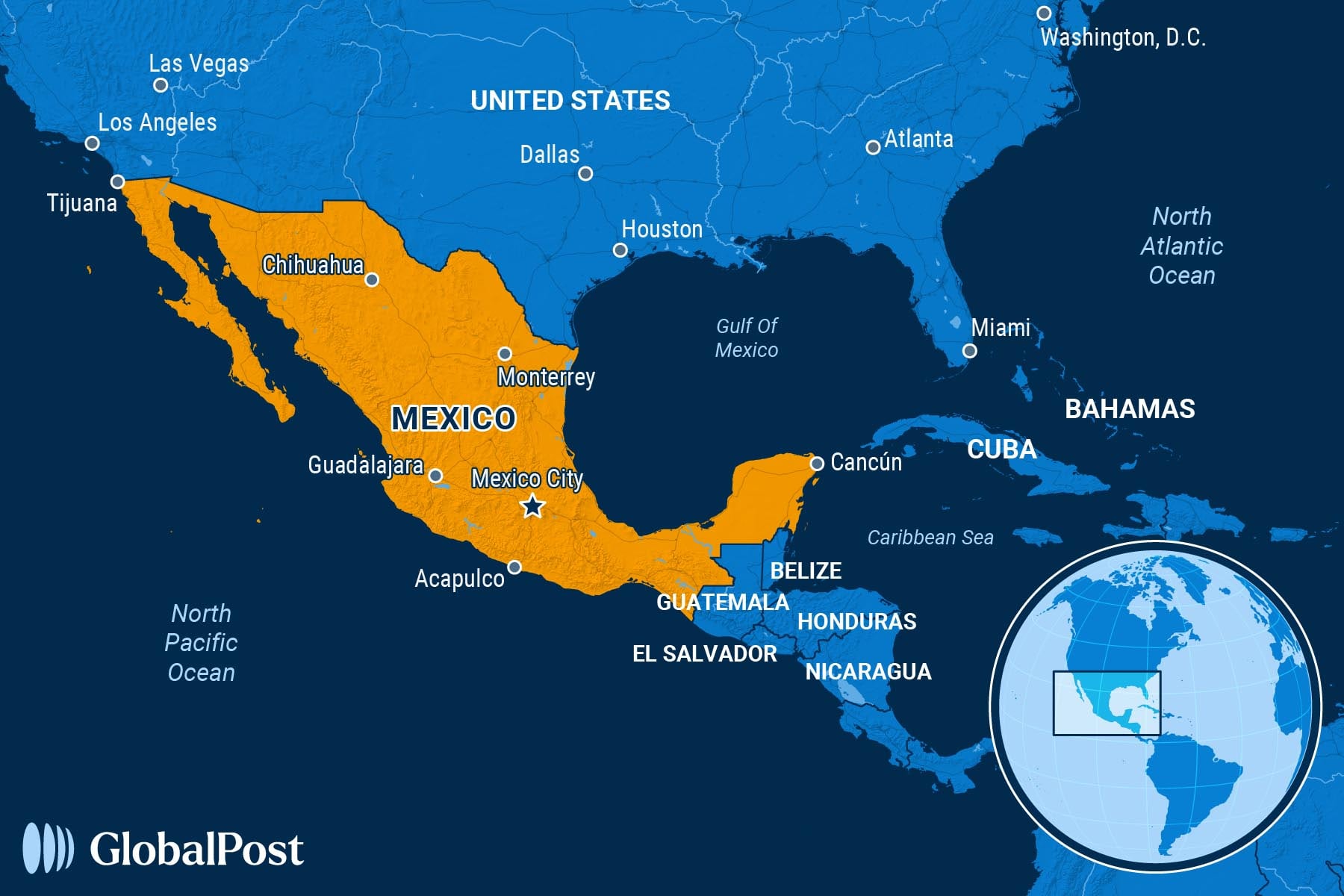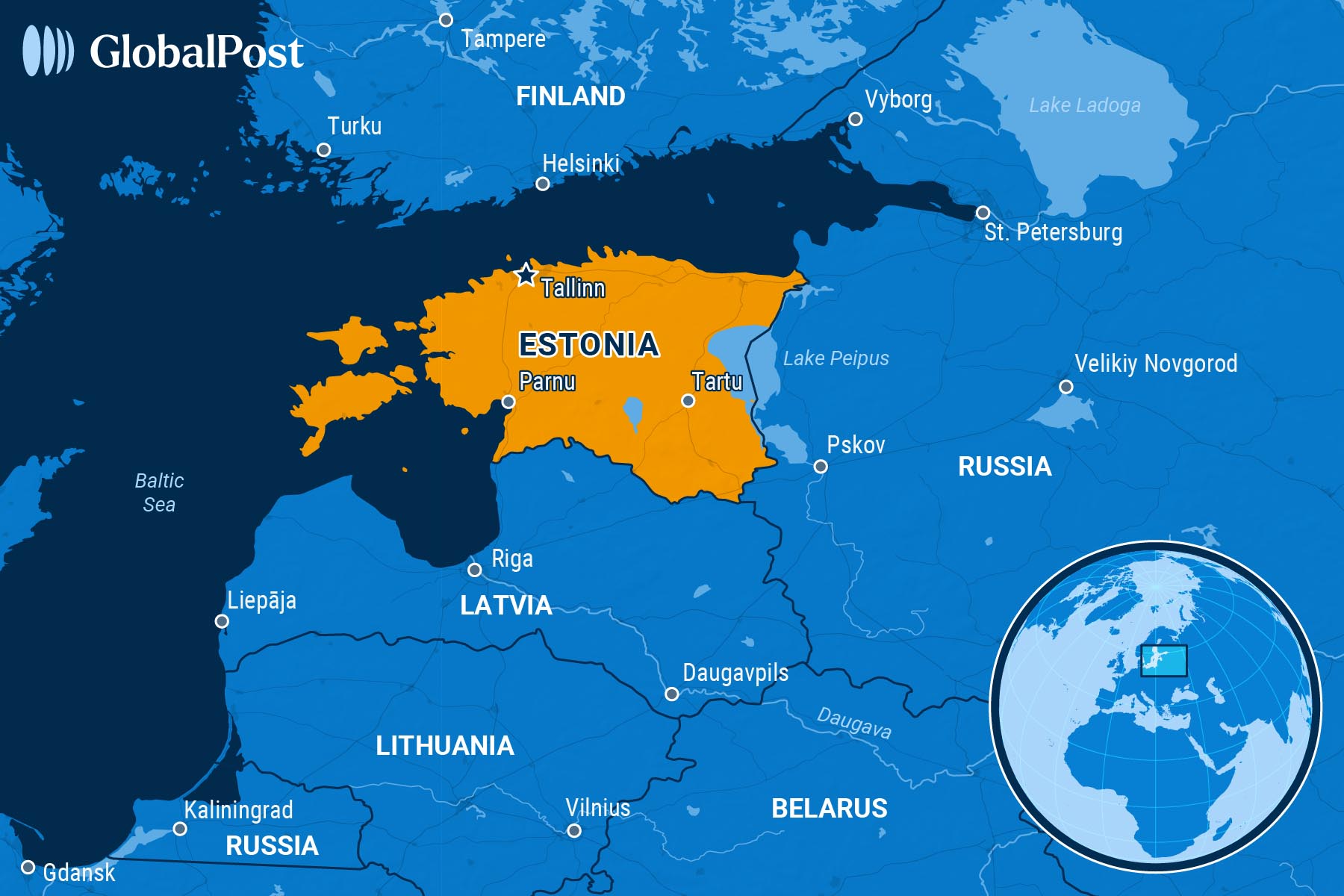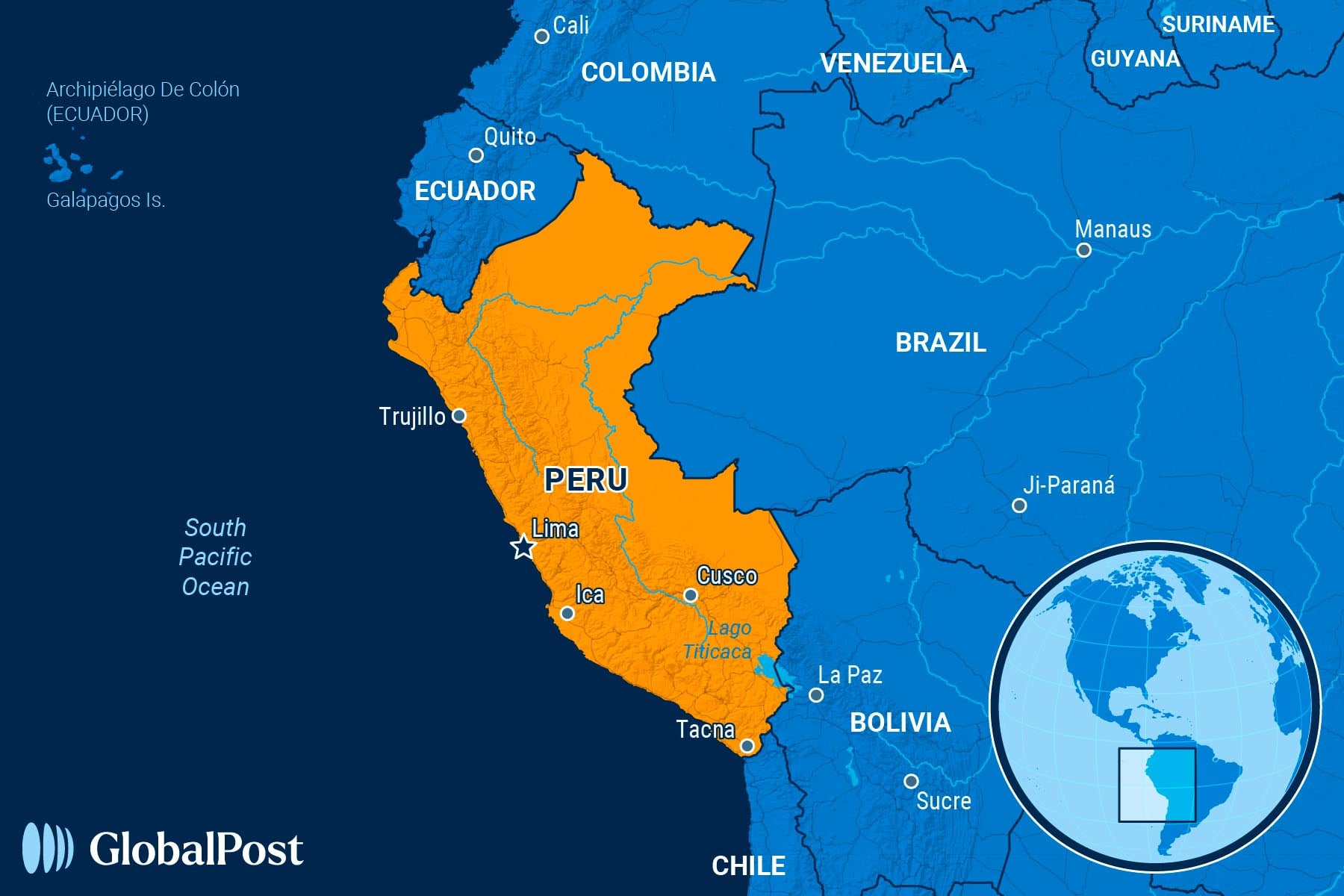The Lingering Epidemic: Mexico Grapples With Growing Number of the ‘Disappeared’
NEED TO KNOW
The Lingering Epidemic: Mexico Grapples With Growing Number of the ‘Disappeared’
MEXICO
 In March, furious protesters placed 400 pairs of shoes on the ground at Mexico City’s Zócalo plaza, in front of the National Palace, as well as in other squares around the country.
In March, furious protesters placed 400 pairs of shoes on the ground at Mexico City’s Zócalo plaza, in front of the National Palace, as well as in other squares around the country.
The shoes were a representation of hundreds of pairs found at the site of a mass grave, likely belonging to some of the 130,000 who have gone missing in the past few decades and haven’t been found.
Protesters wanted to make sure that President Claudia Sheinbaum, who lives and works on that plaza, got the message.
“We want to know where they are,” Gustavo Sánchez told Al Jazeera, referring to his son, Abraham Zeidy Hernández, who disappeared in the state of Nuevo León last year.
But the family members and friends of those who have disappeared, who marched again across cities and towns in Mexico late last month, say that efforts to find them remain lagging in spite of Sheinbaum’s campaign promises last year. Meanwhile, the numbers are growing.
The number of missing people in Mexico increased 12 percent in 2025, double the amount of the increase last year, according to the Mexican Institute of Human Rights and Democracy.
Sheinbaum has tried to increase coordination between law enforcement, the state, and the federal government, and told police to investigate disappearances immediately instead of waiting 72 hours. However, family members of those missing say the efforts aren’t enough.
While being “disappeared” has always been an issue in Mexico – and in Central and South America – since the 1960s, most of those 130,000 who are currently missing have disappeared since 2007, when then-President Felipe Calderón launched his “war on drugs” and the biggest cartels. In many cases, those who disappeared were forcibly recruited by drug cartels – or murdered for resisting them.
“The violence erupted very quickly once the war on the cartels began,” Eurasia Group’s Mexico analyst Andrea Villegas told Gzero. “So that leads to more inter-cartel violence as well, because when one group is dismantled, rival organizations fight to seize its territory and establish control.”
These criminal organizations use killing or disappearances as a means of punishment to keep order within the camp or in areas they control. They also use disappearances as a way to sow fear in a population, “creating a climate of suspicion and betrayal,” wrote University of Bath professor, Brad Evans, in the Conversation.
While drug cartels and organized crime groups are the main perpetrators, say analysts, security forces are also responsible for disappearances and the deaths that have occurred across the country.
For example, in 2023, a government truth commission determined that local, state, and federal authorities cooperated with one gang in the murder of the 43 students who disappeared in 2014 in Iguala in southern Mexico, labeling it a “state crime.”
In that same year, officials arrested at least 98 police officers, soldiers, and civil servants who were suspected of being involved in that case. To date, the remains of only three of the students have been found.
As a result, numerous volunteer groups, often including family members of the disappeared, have formed search teams, known as “Buscadores,” to hunt for their loved ones, and by doing so, put themselves in grave danger.
In March, one search team called the Warrior Searchers of Jalisco found a mass grave at Rancho Izaguirre in Teuchitlan, Jalisco state, with ashes, bones, and hundreds of items of clothing, including the hundreds of pairs of shoes, thought to be from victims who were murdered and allegedly cremated in ovens at the ranch, now called “an extermination site.”
Meanwhile, after the discovery, several members of the search team disappeared.
The discovery of the mass grave, something that has become a normal occurrence in the country, even shocked Mexicans: Protests and vigils broke out around the country to demand more action against the cartels by the government.
Part of the furor over the discovery was caused by the fact that the ranch, which was allegedly used by the Cártel Jalisco Nueva Generación, had already been previously inspected by local authorities and the National Guard six months earlier. Officials missed what was easily found by the searchers group, the latter said.
“The discovery exposed the brutality of organized crime and the omissions, negligence and cover-ups that have allowed it to operate with total impunity for so long,” said Anna Karolina Chimiak, co-director of the Justice Center for Peace and Development (CEPAD), a civil society organization in Jalisco state that works on the enforced disappearance issue, in an interview with Civicus Lens. “It is not credible that a place like this could have operated for so long without the authorities knowing about it.”
THE WORLD, BRIEFLY
NATO Scrambling Response as Russian Aircraft Continue to Violate EU Airspace
ESTONIA
 Two German jets scrambled Sunday to intercept a Russian military aircraft above the Baltic Sea, the latest in what NATO leaders are calling a series of deliberate, provocative acts by the Kremlin aimed at testing the defense alliance’s reactions, the Guardian reported.
Two German jets scrambled Sunday to intercept a Russian military aircraft above the Baltic Sea, the latest in what NATO leaders are calling a series of deliberate, provocative acts by the Kremlin aimed at testing the defense alliance’s reactions, the Guardian reported.
Germany’s air force said Sunday that it sent out Eurofighter jets after a Russian Il-20M reconnaissance plane had switched off its transponders and ignored requests to make contact.
The incident marked the latest incursion by Russian planes in recent weeks: Three Russian fighter jets violated Estonian airspace for 12 minutes on Friday.
On Saturday, Estonia’s military said the MiG-31 jets crossed into its territory between 9:58 a.m. and 10:10 a.m. Friday near Vaindloo Island in the Gulf of Finland, before being intercepted by Italian F-35s from NATO’s Baltic Air Policing Mission, the Associated Press noted.
Russia’s Defense Ministry denied that its aircraft violated Estonian airspace, saying its jets had kept to neutral Baltic Sea waters nearly two miles from Vaindloo Island.
However, Estonian leaders dismissed Moscow’s claims and called Friday’s incident an “unprecedentedly brazen” incursion, with Foreign Minister Margus Tsahkna noting that it was the fourth time Russia had violated Estonia’s airspace this year.
The incursion prompted Tallinn to invoke NATO’s Article 4, which allows members to meet with allies if their security is threatened.
Estonian Defense Minister Hanno Pevkur stressed that while there was no immediate military threat, the move was part of a broader Russian strategy to distract Western resources from Ukraine through hybrid warfare, airspace incursions, and cyberattacks.
Friday’s breach followed a string of recent provocations in the past two weeks, including the entry of 19 Russian drones into Polish airspace and a drone breach over Romania, both NATO members. Poland also invoked Article 4, prompting NATO to launch its “Eastern Sentry” mission to bolster defenses along its eastern flank, the Washington Post wrote.
The recent incidents have drawn criticism from the European Union and other NATO members, with Czech President Petr Pavel calling for the military alliance to respond more forcefully – even by shooting down intruding jets – to deter Moscow.
Analysts said the weekend incident came as Washington is planning to stop longtime security assistance programs for Europe, including a program to fortify the continent’s eastern flank against a potential attack by Russia.
Last month, the Pentagon told European security officials it would defund a long-running $200 million security aid program meant to boost the defenses of Baltic nations, a signal critics say undermines NATO’s deterrence posture as Russian tests intensify.
Even so, when asked if Washington was willing to defend its European allies from Russian aggression, US President Donald Trump on Sunday said: “Yeah, I would. I would.”
Meanwhile, EU countries announced the bloc’s 19th sanction package against Russia that includes an end to imports of Russian liquefied natural gas by 2027, while also targeting firms and cryptocurrency platforms that do business with Russia and Moscow’s “shadow fleet” of ships evading a ban on Russian oil. It is still pending approval.
Mass Protests Erupt in Manila Over Corruption Scandal
PHILIPPINES
 Tens of thousands of people took to the streets of the Philippines’ capital, Manila, on Sunday to protest a multibillion-peso corruption scandal over so-called “ghost” flood-control projects, sparking anger over government incompetence and calls for the resignation of President Ferdinand Marcos Jr., Al Jazeera reported.
Tens of thousands of people took to the streets of the Philippines’ capital, Manila, on Sunday to protest a multibillion-peso corruption scandal over so-called “ghost” flood-control projects, sparking anger over government incompetence and calls for the resignation of President Ferdinand Marcos Jr., Al Jazeera reported.
Around 50,000 people marched in the capital carrying the Philippine flags and banners reading “No more, too much, jail them.” Scattered clashes erupted as demonstrators threw rocks and set barricade tires on fire, while police fired water cannons.
Local authorities said at least 49 people were detained and around 70 officers were injured, the Associated Press noted.
Meanwhile, authorities said that around 30,000 people marched on the Epifanio de los Santos Avenue thoroughfare in Quezon City, a site symbolic for past People Power protests that helped oust Marcos’ father, Ferdinand Marcos Sr., from power in 1986, according to the South China Morning Post (SCMP).
Anger has been mounting in the Southeast Asian nation since July, when Marcos Jr. highlighted the scandal of ghost infrastructure projects during his State of the Nation speech.
He later set up an independent commission to probe anomalies in more than 9,800 projects worth around $9.5 billion.
The scandal deepened after wealthy contractors Sarah and Pacifico Discaya were linked to lucrative contracts while flaunting luxury cars and foreign assets.
The Department of Finance estimated that corruption in the flood-control sector cost the economy around $2 billion between 2023 and 2025, though Greenpeace suggested losses could be closer to $18 billion.
Last week, Marcos Jr. said he did not blame citizens “one bit” for their anger but urged demonstrators to remain peaceful. Meanwhile, the scandal has prompted some leadership changes in both houses of the legislature, with House of Representatives Speaker Martin Romualdez – a cousin of the president – stepping down last week.
Observers said Sunday’s turnout reflected broader discontent with systemic graft. Analyst Arjan Aguirre told the SCMP that the protests would be “the beginning of something big,” urging anti-corruption advocates to unite behind measures, such as a freedom of information law.
Others, however, cautioned that rival political groups, including allies of former president Rodrigo Duterte, could attempt to hijack the movement.
The protests are the latest to erupt in South, Southeast, and East Asia in the past few years over corruption and other issues. Earlier this month, Nepali protesters ousted the country’s leader after demonstrations broke out over the economy, corruption, and nepotism.
Anti-Government Protests in Peru Turn Violent
PERU
 Hundreds of anti-government protesters clashed with police in Peru’s capital of Lima over the weekend, the latest unrest to affect the South American country over organized crime, government corruption, and a recent pension reform program, Agence France-Presse reported.
Hundreds of anti-government protesters clashed with police in Peru’s capital of Lima over the weekend, the latest unrest to affect the South American country over organized crime, government corruption, and a recent pension reform program, Agence France-Presse reported.
On Saturday, around 500 demonstrators marched in Lima’s center under heavy police presence. Violence broke out as protesters tried to get close to the executive and congressional buildings.
Police said at least three officers were wounded.
The weekend protests were organized by a youth collective called “Generation Z” targeting the administration of President Dina Boluarte, whose approval ratings have dropped to single digits amid rising cases of extortion and violence due to organized crime in the country.
Opinion polls show that a majority of Peruvians see the government and the conservative-majority congress as corrupt.
Boluarte’s term ends next year.
Analysts said the demonstrations are partially in protest of a pension reform plan passed by the legislature last week.
The new law requires young adults to join a private pension fund, even though many face employment and wage uncertainty as gig workers and other forms of self-employment.
DISCOVERIES
Trending Chimps
Fifteen years ago, researchers observing chimps in a sanctuary in Zambia noticed that a female chimp had taken on a new habit: She began sticking a blade of grass in her ear, leaving it there for no apparent reason.
Soon after, seven members of the group copied that behavior, which remained in fashion even after the female trendsetter died.
Now, researchers have published a study based on observations from more than a decade later, in which they document how chimps from another group at the same sanctuary also stuck blades of grass in their ears, even though they had no contact with the original group.
Meanwhile, the newly observed group took the trend one step further: Five of the eight chimpanzees stuck grass in their ears, while six of the eight also had a blade of grass dangling from their rears. The trend was not observed in other chimp groups at the same sanctuary, despite similar living conditions.
“Why they do exactly this particular thing, I’m not really concerned about,” study author Edwin van Leeuwen said in a statement. “But they’re copying the behavior from each other, that is the important insight.”
By tracking which animals showcased the behavior over time and tracing it back to when it started, the researchers found that it was likely that the animals copied the behavior from their caretakers rather than inventing it themselves.
“Both groups where chimps put blades of grass in their ears had the same caretakers. These caretakers reported that they sometimes put a blade of grass or a matchstick in their own ears to clean them,” said Van Leeuwen. “Caretakers in the other groups said they did not do this. The chimps in the one group then figured out to stick the blade of grass in another place as well.”
Similar trends with no apparent purpose have been observed in chimps in captivity, but not in the wild.
“In captivity, they have more free time than in the wild,” said Van Leeuwen. “They don’t have to stay as alert or spend as much time searching for food.”
However, the researchers doubt that the trend is truly “useless.”
“It could also serve a social purpose,” said Van Leeuwen. “By copying someone else’s behavior, you show that you notice and maybe even like that individual. It might help strengthen social bonds and create a sense of belonging within the group, just like it does in humans.”
